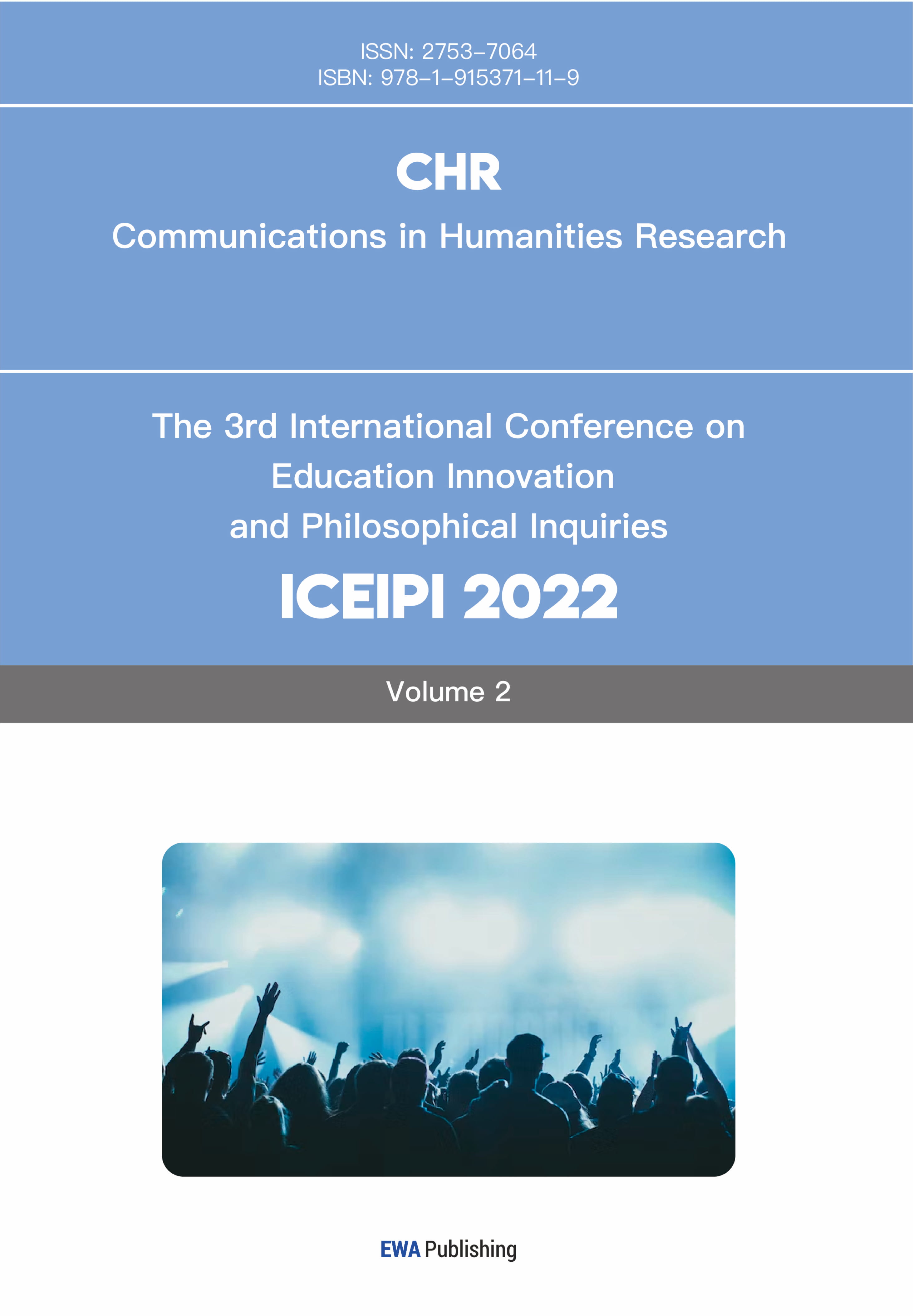References
[1]. Pasty M. Lightbown, Nina Spada. How Language are Learned[M]. Oxford University Press, 2013:129-130.
[2]. Karin Richter. Foreign Accent and the Role of Identity in the Adult English as a Foreign Language Pronunciation Classroom. Developing Advanced English Language Competence: A Research-Informed Approach at Tertiary Level. Springer International Publishing, 2021:323-341.
[3]. Nakata Yoshiyuki, Ikeno Osamu, Kimura Yuzo, Naganuma Naoyuki, Andrews Stephen. Assessing Japanese teachers’ classroom English “internationally”: implications for the development of classroom English language benchmarks in Japan. Language Testing in Asia, 8:15. 2018:13-14.
[4]. Pavel Trofimovich , Michael Magidthe. Learners’ Ethnic Group Affiliation and L2 Pronunciation Accuracy: A Sociolinguistic Investigation. TESOL Quarterly 2005 (3): 489-511.
[5]. Winfried Nöth. Habits, Habit Change, and the Habit of Habit Change According to Peirce. Consensus on Peirce’s Concept of Habit: Before and Beyond Consciousness. Springer International Publishing, 2016:38-52.
[6]. Quan An. Study on the influence of mother tongue on second language pronunciation acquisition and teaching methods [J]. Overseas English (Part 1), 2019:13-19.
[7]. Feng Li. Contrastive Study between Pronunciation Chinese L1 and English L2 from the Perspective of Interference Based on Observations in Genuine Teaching Contexts. IRAL: Creative Commons Attribution 4.0 License. 2016 (10): 90-100.
[8]. H. Douglas Brown. Principles of Language Learning and Teaching[M]. Foreign Language Teaching and Research Press, 2021:74-76.
[9]. Yuda Zhang. Age and Second Language Acquisition. The Future Talent [J], 2016:277.
[10]. H. Douglas Brown. Principles of Language Learning and Teaching[M]. Foreign Language Teaching and Research Press, 2021:105-106.
Cite this article
Zhang,H. (2023). The Influence of the First Language on the Pronunciation of the Second Language: Taking Consonant “r” in English as an Example. Communications in Humanities Research,3,135-139.
Data availability
The datasets used and/or analyzed during the current study will be available from the authors upon reasonable request.
Disclaimer/Publisher's Note
The statements, opinions and data contained in all publications are solely those of the individual author(s) and contributor(s) and not of EWA Publishing and/or the editor(s). EWA Publishing and/or the editor(s) disclaim responsibility for any injury to people or property resulting from any ideas, methods, instructions or products referred to in the content.
About volume
Volume title: Proceedings of the International Conference on Interdisciplinary Humanities and Communication Studies (ICIHCS 2022), Part 1
© 2024 by the author(s). Licensee EWA Publishing, Oxford, UK. This article is an open access article distributed under the terms and
conditions of the Creative Commons Attribution (CC BY) license. Authors who
publish this series agree to the following terms:
1. Authors retain copyright and grant the series right of first publication with the work simultaneously licensed under a Creative Commons
Attribution License that allows others to share the work with an acknowledgment of the work's authorship and initial publication in this
series.
2. Authors are able to enter into separate, additional contractual arrangements for the non-exclusive distribution of the series's published
version of the work (e.g., post it to an institutional repository or publish it in a book), with an acknowledgment of its initial
publication in this series.
3. Authors are permitted and encouraged to post their work online (e.g., in institutional repositories or on their website) prior to and
during the submission process, as it can lead to productive exchanges, as well as earlier and greater citation of published work (See
Open access policy for details).
References
[1]. Pasty M. Lightbown, Nina Spada. How Language are Learned[M]. Oxford University Press, 2013:129-130.
[2]. Karin Richter. Foreign Accent and the Role of Identity in the Adult English as a Foreign Language Pronunciation Classroom. Developing Advanced English Language Competence: A Research-Informed Approach at Tertiary Level. Springer International Publishing, 2021:323-341.
[3]. Nakata Yoshiyuki, Ikeno Osamu, Kimura Yuzo, Naganuma Naoyuki, Andrews Stephen. Assessing Japanese teachers’ classroom English “internationally”: implications for the development of classroom English language benchmarks in Japan. Language Testing in Asia, 8:15. 2018:13-14.
[4]. Pavel Trofimovich , Michael Magidthe. Learners’ Ethnic Group Affiliation and L2 Pronunciation Accuracy: A Sociolinguistic Investigation. TESOL Quarterly 2005 (3): 489-511.
[5]. Winfried Nöth. Habits, Habit Change, and the Habit of Habit Change According to Peirce. Consensus on Peirce’s Concept of Habit: Before and Beyond Consciousness. Springer International Publishing, 2016:38-52.
[6]. Quan An. Study on the influence of mother tongue on second language pronunciation acquisition and teaching methods [J]. Overseas English (Part 1), 2019:13-19.
[7]. Feng Li. Contrastive Study between Pronunciation Chinese L1 and English L2 from the Perspective of Interference Based on Observations in Genuine Teaching Contexts. IRAL: Creative Commons Attribution 4.0 License. 2016 (10): 90-100.
[8]. H. Douglas Brown. Principles of Language Learning and Teaching[M]. Foreign Language Teaching and Research Press, 2021:74-76.
[9]. Yuda Zhang. Age and Second Language Acquisition. The Future Talent [J], 2016:277.
[10]. H. Douglas Brown. Principles of Language Learning and Teaching[M]. Foreign Language Teaching and Research Press, 2021:105-106.









